The opening of the Panama Canal in 1914 brought the influence of the United States to the people of San Blas. The Guna began to buy manufactured products and these items along with the advertising images became favorite subjects for mola artisans.
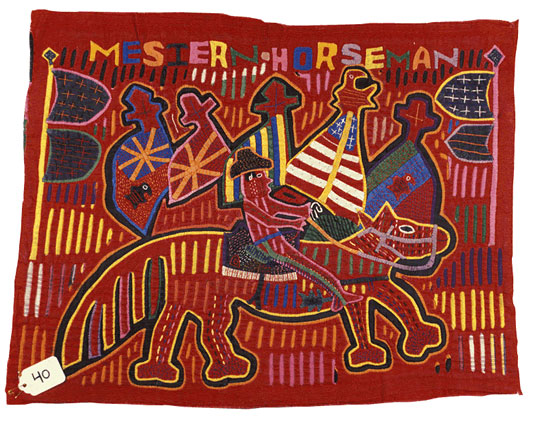
Western Horseman [1997.1.158]
A 1996 cover of Western Horsemen magazine inspired this mola. A look at the original magazine cover from which this design was copied proves what liberties a Guna’s freehand artisan can take with a subject and still keep it within recognizable grounds. All the important elements are here—the elongated horse with its flowing tail, the mounted hombre wearing spurs, and the cluster of foreign flags denoting an international gathering for western horsemen—but the artist’s concept has distorted them. A close inspection also shows that two flags’ escutcheons have been slyly altered into Guna bird motifs.
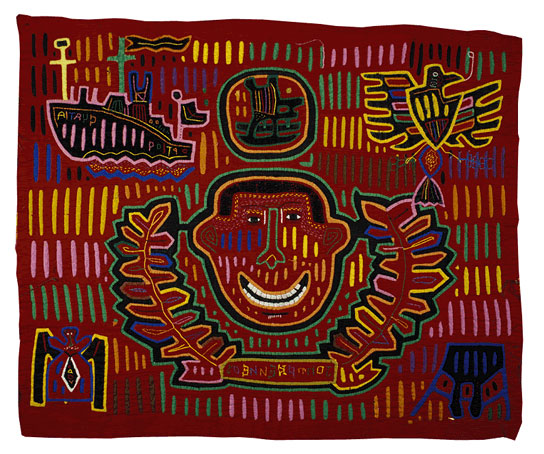
John F. Kennedy with PT-109 Boat [1997.1.251]
During his years in office, President Kennedy enjoyed wide popularity in Latin American countries. This John F. Kennedy commemorative mola, one of the many similar designs that appeared right after his death, shows him gloriously wreathed in laurels and surrounded by the media-touted images associated with his life—the Chief of State symbol, his rocking chair, and PT boat 109.
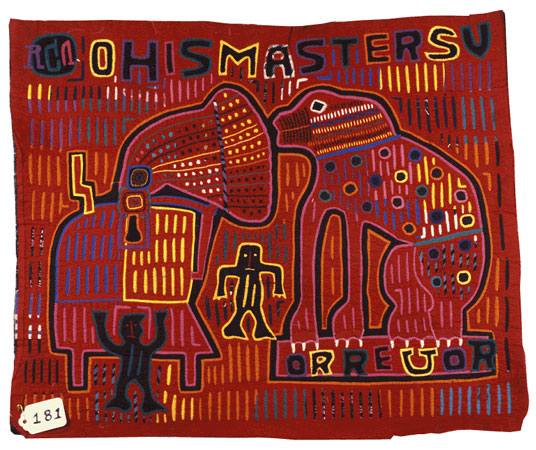
RCA Logo [1997.1.254]
This is a very popular mola motif, using the RCA trademark as its inspiration. The missionary brought the phonograph to the islands years ago and the Guna mola-makers were much impressed by what they saw and heard. If a mola design catches on, it is usually copied over and over again. Although most widely used in the 1950s, this motif is still created today.
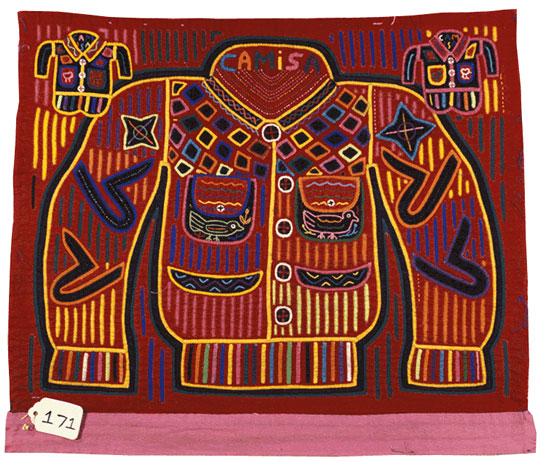
A Western-Style Shirt [1997.1.288]
Camisa is the Spanish word for shirt and, although it looks more like a jacket, it is a western-style shirt, not indigenous clothing. Clothing was a very popular theme in the 1970s and mola-makers often portray western-style clothing on their mola panels.
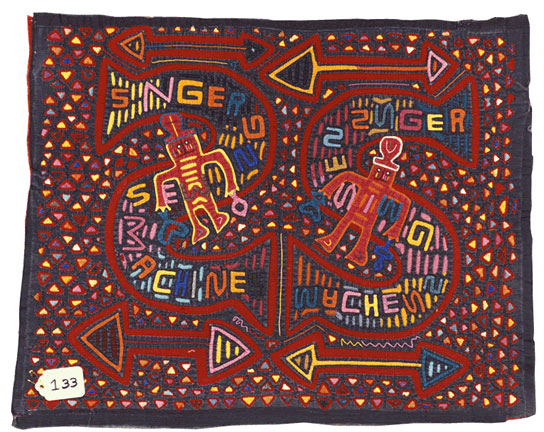
Logo for Singer Sewing Machines [1997.1.236]
This mola shows a Guna woman’s interpretation of the Singer Sewing Machine logo. Sewing machines were introduced to San Blas islanders many years ago, but they proved impractical for the intricacies of fine mola making. On the other hand, men use sewing machines for making their traditional shirts and women find them useful for attaching yokes and flounces to their appliquéd panels. The Singer Sewing Machine symbol, now associated with all kinds of sewing, soon became a popular mola motif that is still used occasionally in one or another of its many versions.
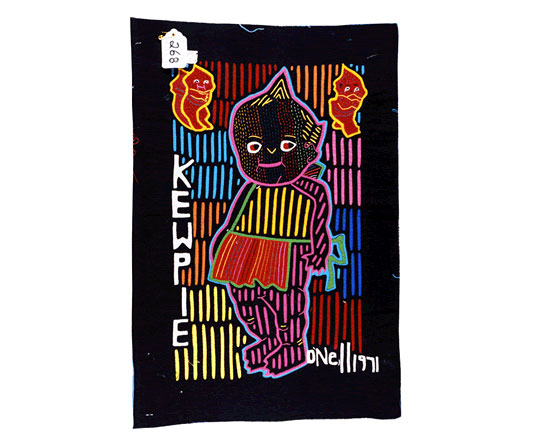
A Kewpie figure [1997.1.213]
This is a unique mola. It says “Kewpie” and was signed O’Nell 1971. It is a rendition of a “Kewpie” doll. Whether or not that is the name of the Guna woman artist or the person for whom it was designed is unclear. It was probably done at the suggestion of somebody, possibly the collector, or perhaps the collector just bought it because it was unusual.
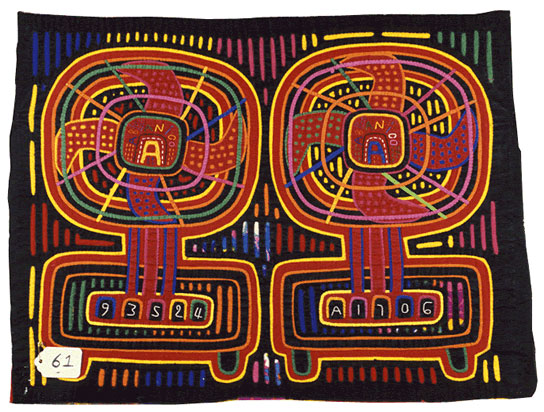
Two Electrical Fans [1997.1.219]
This design is two electrical fans taken from a magazine advertisement, as the Guna’s did not have electricity.
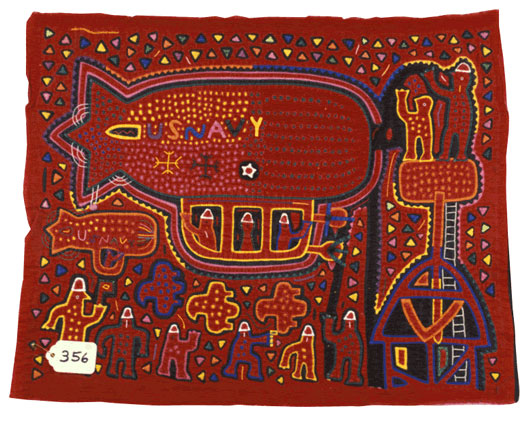
A U.S. Navy Blimp [1997.1.263]
This great older mola shows a U.S. Navy blimp. It is delicately and exquisitely done as seen in all the small snipped-out areas, the hand-done rickrack, and the stitching around them. It is probably dating from the 1950s.
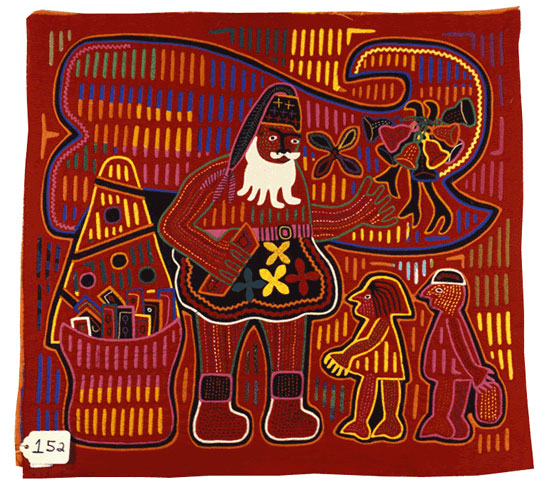
Santa Claus [1997.1.230]
Even Santa Claus manages to visit the tropics during Christmas celebrations, although he is more likely to arrive in San Blas by plane or cayuco (dugout canoe) than by sleigh. Panama is a largely Catholic country. Guna mothers adorn their molas with Christmas motifs. This theme became popular during the 1970s.
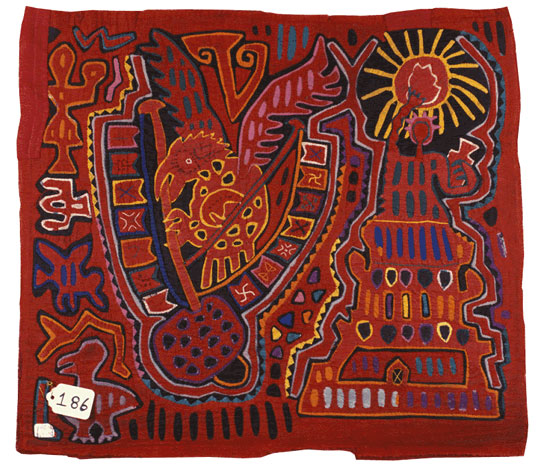
Statue of Liberty [1997.1.243]
This design is taken from an illustration of the Statue of Liberty, which appears on matchboxes or needle book covers. When a Guna artist copies an advertisement or product label onto a panel, she does it because something in the design catches her fancy.
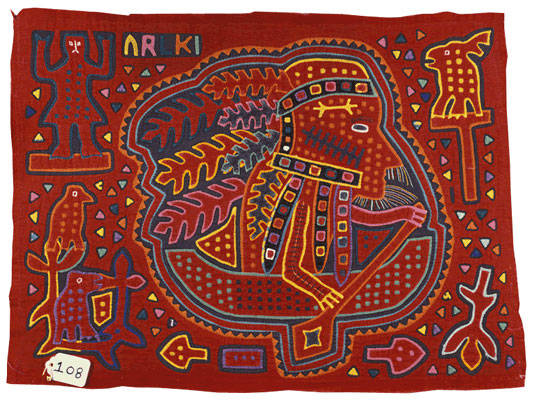
A Native American Paddling a Canoe [1997.1.210]
This mola shows a Native American in a canoe. He is paddling his canoe, has on war paint, and wears a feathered headdress. This image could be from a child’s book of cowboys and Indians, a book of legends, or form an advertisement. The cloth on the back of the panel indicates the mola quite probably dates back to the 1950s.